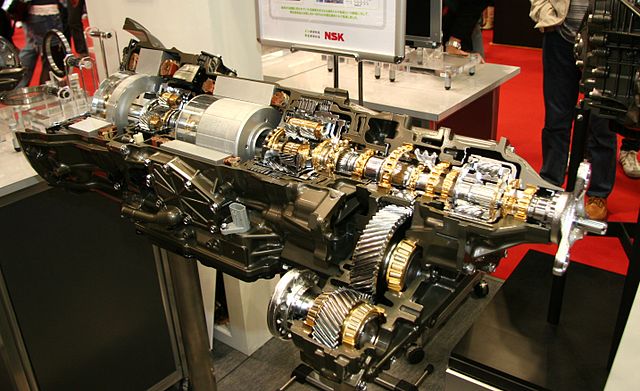The transmission of your vehicle is one of the most important and most complex pieces of equipment in your car. This complex piece of machinery determines how much power from the engine actually makes it to the drive-shaft, dictating what gear you’re in and whether you are moving forward, backwards, or just sitting stationary and idling. When the transmission goes out, it renders the car into little more than a useless mass of metals and plastics. Knowing some common transmission problems will help you head off a break-down that may deprive you of transportation for some time.
Low Fluids or Leaks:
The most recognizable and common transmission problem is leaking transmission fluid. The transmission fluid is what lubricates, cleans, and seals the transmission, allowing it to function without seizing up leading to costly repairs. When one finds a leak it should be repaired as quickly as possible. Fortunately detecting a leak is quite simple: stains on the driveway are one indicator, but a much easier method is simply periodically checking the transmission fluid levels much in the same way one checks motor oil levels.
Unlike motor oil, transmission fluid is not actually consumed by the vehicle, so low fluid levels indicate a leak somewhere along the line. It is also recommended that one pays attention to the color and odor of the fluid – if it is bright red and has a sweet smell to it then all is well. If the transmission fluid appears dark or smells burnt you may need to get the fluid changed or flushed.
Solenoid Problems:
Another important transmission component that commonly fails is the solenoid. The solenoid is responsible for regulating fluid levels throughout the transmission, and a failure in this device could cause problems. Most commonly the issue is related to an electrical problem or a leak, but if there is no leak detected and the vehicle’s transmission is slipping then the solenoid is another device that would merit inspection.
Lack of Response:
Another thing to monitor is gear shifting. Experienced drivers eventually learn the sounds an engine makes just before it is supposed to shift, how the car ‘feels’ before a shift happens or is supposed to happen both with automatic and manual transmissions. If your vehicle is failing to shift immediately in a manual transmission, or if the gear is failing to engage when shifting from park to reverse or drive in automatics, then this indicates a possible transmission issue that should be checked out as soon as possible.
Grinding or Shaking:
When a vehicle shifts gears the transition from one gear to the next is supposed to be smooth and barely noticeable. Significant amounts of vibration or shaking when shifting gears could point to problems with the transmission. While the grinding and shaking are solely related to transmission problems, such issues still merit inspection or servicing by a professional.
Conclusion:
By remaining aware of common transmission problems, one can also learn to detect early warning signs that something is not right. One’s vehicle, much like with the human body, is a complex machine that has many parts that must be maintained to ensure everything functions correctly, and the transmission is one of the most important parts. Thus if you are experience any of the above, or if something else doesn’t seem right, or even if it’s a simple matter of that check-engine light having popped on, it is time to take your vehicle in for a much needed inspection and possible repair. This can save on even more costly repairs in the long run, and in the case of transmission problems, can prevent an unplanned absence from work!
Sources:
Transmission Repair Cost Guide
CarsDirect
Today’s guest post was written by Brennen Kliffmueller who currently works at TimsGermanAuto.com. Brennen attended Florida State University and has been blogging for the last two years.
